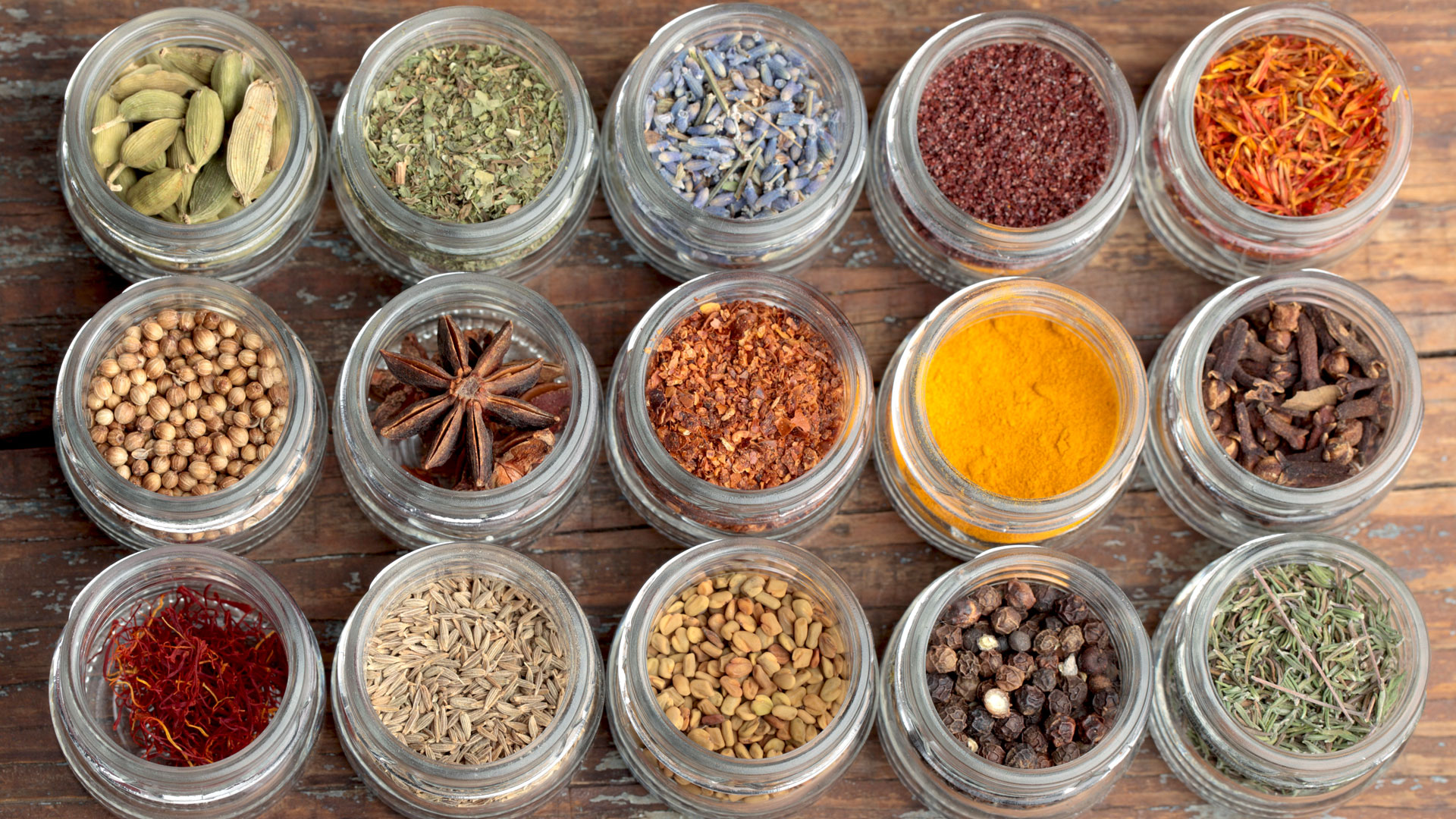Real Food Encyclopedia | Nutmeg and Mace
The allure of spice can be seductive to the point of inspiration or destruction. If the yearly frenzy for pumpkin spice latte fanatics isn’t proof enough, we can look to history for evidence: The course of trade, the cause of war, the lines of the map owe much of their trajectory to the pursuit of spices. Centuries ago, when European empires were violently forged with the goal of controlling the spice routes, the humble woody kernel that is nutmeg (Myristica fragrans) was the most influential of all.
Despite its name, nutmeg is not a nut but a seed, one that can be grated or ground for use as a warm, earthy spice. Another spice, mace, comes from the red seed covering (or “aril”) that surrounds it.
Did you know?
- Nutmeg is native to Indonesia, specifically the remote Maluku Islands, also sometimes known as the Spice Islands — a relic of the time when European colonists were vying, often violently, to control the valuable spices that grew there.
- The word “nutmeg” comes from the Old French “nois muguete,” which translates roughly to “nut smelling like musk.”
- The fruit that surrounds the nutmeg seed is also edible, and is used in South and Southeast Asia to make candies and jams.
- A mature nutmeg tree can produce 2,000 to 3,000 fruits per year.
What to look for when buying nutmeg and mace
Nutmeg is sold both whole and ground but, because flavor deteriorates quickly, most cooks prefer to buy it whole and grate it as needed. Furthermore, ground nutmeg is sometimes cut with seeds from related Myristica species, which have much less flavor.
Mace has a more delicate nutmeg flavor with some added piquancy and sweetness. Mace is sold ground or in whole pieces, called “blades.”
Sustainability of nutmeg and mace
Most nutmeg is still produced by smallholder farmers, but fertilizers and pesticides are sometimes used. As nutmeg trees grow in tropical regions with regular rainfall, the trees do not typically require excessive irrigation. They can be used as an intercrop in coconut and coffee plantations.
Labor issues
Nutmeg production is less labor-intensive than producing some other spices, but as in any form of agriculture, enforcement varies from country to country when it comes to protecting the health and welfare of workers. The trade of spices has a bloody history, nutmeg perhaps most of all: In the early 17th century, the Dutch violently invaded the Maluku Islands and killed or enslaved most of the population in order to seize a monopoly. Even today, spice supply chains can mirror these colonial roots. Some labels, such as Fair Trade Certified, are meant to indicate that an ingredient was produced in a manner that is fair to workers.
Geography
The tree that produces nutmeg, and its byproduct, mace, prefers the rich soils and hot, humid conditions of the tropics. Indonesia dominates world production, but nutmeg is now also cultivated elsewhere in Asia and in the Caribbean, particularly in Grenada, which itself is nicknamed “Spice Island.”
Seasonality
Nutmeg and mace are harvested in Indonesia from June to August, which coincides with the monsoon season, the wettest time of the year. The fruit must be carefully handled so that it doesn’t spend time on the ground and is dried immediately and completely to avoid contamination by pathogens, particularly Aspergillus flavus, a fungus (which produces carcinogens called aflatoxins) that develops in many crops when mishandled, especially in warm and wet conditions.
Eating nutmeg and mace
Storing
Whole nutmeg keeps for five years in a sealed jar, or two to three once the jar is opened. Ground nutmeg will lose its flavor much more quickly. Ground and whole mace will keep in a tightly closed container for three to four years.
Cooking
Nutmeg and mace can be found in many spice blends, including garam masala, Chinese thirteen-spice powder, Moroccan ras el hanout and, of course, pumpkin spice.
Nutmeg is used in desserts of all sorts, particularly in colder months when its warming flavor and fragrance add a note of coziness. A cup of eggnog or traditional Bajan rum punch would not be complete without a grating of nutmeg dusted on top. But the spice goes well in many savory dishes, too. It’s a natural pairing with milk or cheese, often seen in dishes like creamed spinach, macaroni and cheese or potato gratin, and is the distinctive flavor in béchamel. Nutmeg also goes well with meats, as in a Bolognese sauce, glazed ham, jerk chicken, Swedish meatballs or lamb biryani. Mace, while somewhat less common in the U.S., can be used in similar ways.
Nutrition
Nutmeg and mace are rarely eaten in high enough quantities to provide much nutritional value. When a larger volume is consumed, the chemical myristicin, present in nutmeg, can have psychoactive effects — and in some cases lead to poisoning. The small gratings and measurements called for in recipes are nothing to worry about. However, it is best to keep nutmeg out of reach of children to avoid accidental overdoses.
Top photo by Kenishirotie/Adobe Stock.

